Majestic creations worthy of a king's chambers and small tokens of resourcefulness that can fit nicely in a pocket. Sumptuous spheres covered in gold and precious stones, or humble instruments for the pragmatic life of explorers and sailors. Since ancient times, globes have represented all these things together, and many more. The one constant: an ennobling quest to effectively combine beauty and convenience, with the aim of showing the beholder a unique vision of the world.
The globe is one of humanity's most enduring creations, a paragon of artistic refinement and scientific achievement like few others. For centuries, globes have provided a tangible representation of our world and the heavens above. For this reason, one could say that their history is also the history of mankind, in its millennia-long effort to enclose the vastness of the world in the palm of its hand.
In this article, we will attempt to outline the long history of globes, and particularly the globemakers, from classical times to the present day.
Globes in the Ancient Times
The use of globes to model the world goes back a long way, although at first their accuracy and beauty were far from ideal. One of the earliest recorded examples of globes is provided by the Greek geographer Strabo (63/64 B.C.-24 A.D.). In his writings, he mentions the philosopher Crates of Mallos, perhaps the first recorded globe-maker, who accomplished a remarkable feat for the time: the construction of a globe approximately 3 metres in diameter.
Although no physical examples of these early globes have survived, it seems clear that in the ancient world globes served both practical and symbolic purposes, reflecting humanity's place and role in the cosmos.
Their exceptional rarity and fragility have meant that specimens surviving from the medieval period onwards are invaluable to historians today. But if in antiquity and the Middle Ages globes were already produced and manufactured with the utmost care, it was during the Renaissance that the art of globe-making reached its zenith.
Renaissance Globes: The Birth of Modern Globe-making
The European Renaissance marked a turning point in the craft of globe-making for several reasons.
The period's technological advancements, such as the printing press and the rediscovery of Ptolemy's Geographica, transformed the globe from a quite niche rarity into a scientific instrument of widespread interest. This era also saw a cultural shift from the Islamic tradition of celestial globes, which focused on mapping the stars, to the development of terrestrial globes, charting the earth.
The evidence, fortunately, is much more consistent than in earlier times. The first name to mention is that of Martin Behaim, a German globe maker in the service of King João II of Portugal. in 1492, Behaim created the first terrestrial globe that has survived to the modern day.

Behaim's work reflects the ardent passion that fuelled the Age of Discovery; his globe translates land, trade routes, goods and markets into a single masterpiece. As is often the case with globes, its value was due as much to its beauty as to its usefulness: the integration of geographical and economic information undoubtedly underlines the globe's usefulness beyond its charm - it was a precious tool for navigators, explorers, merchants and rulers.
The 16th Century: Globes as Tools and Treasures
The 16th century saw the increasing establishment of globe-making as an art and as a science. In this century, the names of the great globe-makers began to be better known and appreciated, both by today's historians and by the nobles and royalty of the time.
Gerardus Mercator, a Flemish globemaker, is one of the most established names in the first half of the century. During his training under the Dutch mathematician Gemma Frisius, Mercator developed globes that incorporated rhumb lines, an important innovation that facilitated navigation on the new Atlantic routes.
However, his globes were also highly prised as symbols of power and prestige. Mercator's globe of 1541, commissioned by Nicolas Perrenot de Granvelle, advisor to Emperor Charles V, is the perfect example of the artistic value that was already recognised for globes.
For de Granvelle, the globe represented not only a scientific curiosity, but also the symbolic ‘possession’ of the world, which the ruler could observe and control in the comfort of his palace. It was not uncommon at this time for globes to be exchanged as proper diplomatic gifts, adorning courts throughout Europe.
Vincenzo Coronelli's name is often associated with the most renowned globes of this century and the next. The story of this Venetian globe-maker, a true visionary and master of his craft, led him to build countless globes of the most diverse shapes and sizes, which adorned the rooms of nobles, doges and even the king of France.
If you want to know more about Coronelli, arguably the most famous globemaker of his time, we recommend you the article we dedicated to him. You can read it here.
Globes in the 17th and 18th Centuries
In the 17th and 18th centuries, globes further evolved as decorative objects and functional tools, reflecting an ever-expanding world that was about to become smaller and more interconnected.
Joseph Moxon, an English globemaker, popularised pocket globes in 1673, miniature versions that could be easily carried around, modelled on the globes already developed by Coronelli and other pioneering globemakers. His subsequent collaboration on the English Globe (1679), designed for use in gardens, highlights how globes became an integral part of the interests of perfect gentlemen.
In the 18th century, the British government's establishment of the Board of Longitude after the sinking of the Scilly Isles in 1707 emphasised the importance of accurate navigation. Although globes were increasingly considered explanatory instruments rather than devices of discovery, their designs were adapted to reflect the latest geographical discoveries. For example, representations of California changed from an island to a peninsula as explorers corrected previous misconceptions.
Towards Modern Globes
The 19th century heralded a democratisation of globe-making, as the instruments became more accessible to the public. Advances in manufacturing techniques allowed for smaller, portable, and cost-effective designs.
John Betts’ collapsible umbrella globe exemplified this trend, enabling easy transport between classrooms or homes. These innovations catered particularly to educational settings, where globes became central to teaching geography and astronomy.
The 20th century brought further transformations to the role of globes. Radio-based navigation techniques and satellite imagery revolutionised geographical representation, diminishing the need for globes in practical navigation. Yet, these same technologies further enhanced appreciation for globes as cultural artefacts.
Satellite photography in the 1960s provided visual confirmation of earth’s shape and geography, validating centuries of cartographic effort. Meanwhile, the rise of mass production brought globes into homes and classrooms worldwide, bridging the gap between their aristocratic past and their modern educational role.
The Legacy of Globemakers
The history of globe making is long and tortuous. Here we have tried to summarise it by focusing on just a few of its highlights.
Certainly, the evolution of globes goes hand in hand with our growing understanding of the world. From the earliest experiments to the scientific triumphs of the Renaissance and modern era, globes have continually transformed to meet the needs of their time.
Today, globes remain iconic - their distinctive allure still untarnished. The tangible fascination of a physical globe endures and will continue to thrive as long as globe makers and enthusiasts remain true to its tradition.
If you want to learn more about my craft as a traditional globe maker, following the footsteps of Vincenzo Coronelli, explore my latest exhibition at Homo Faber 2024 here.




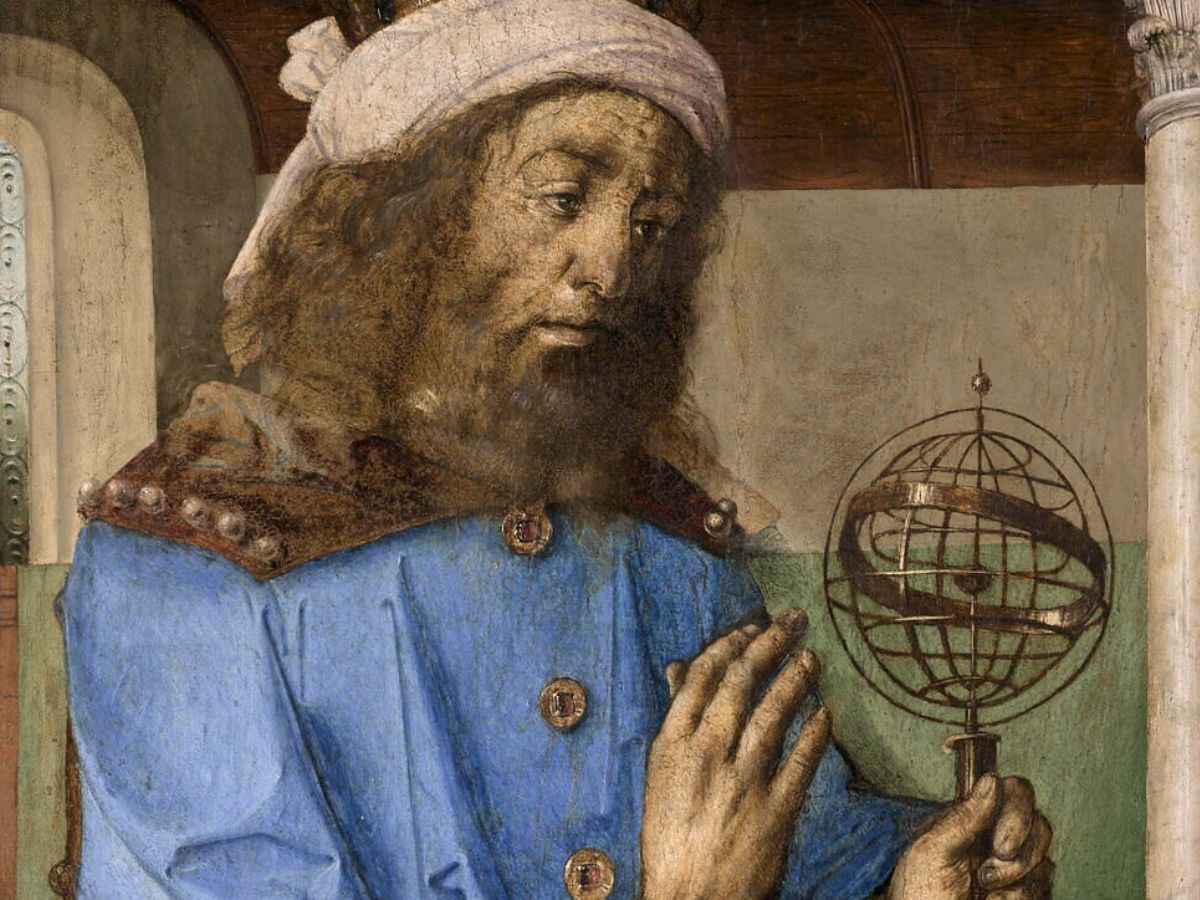

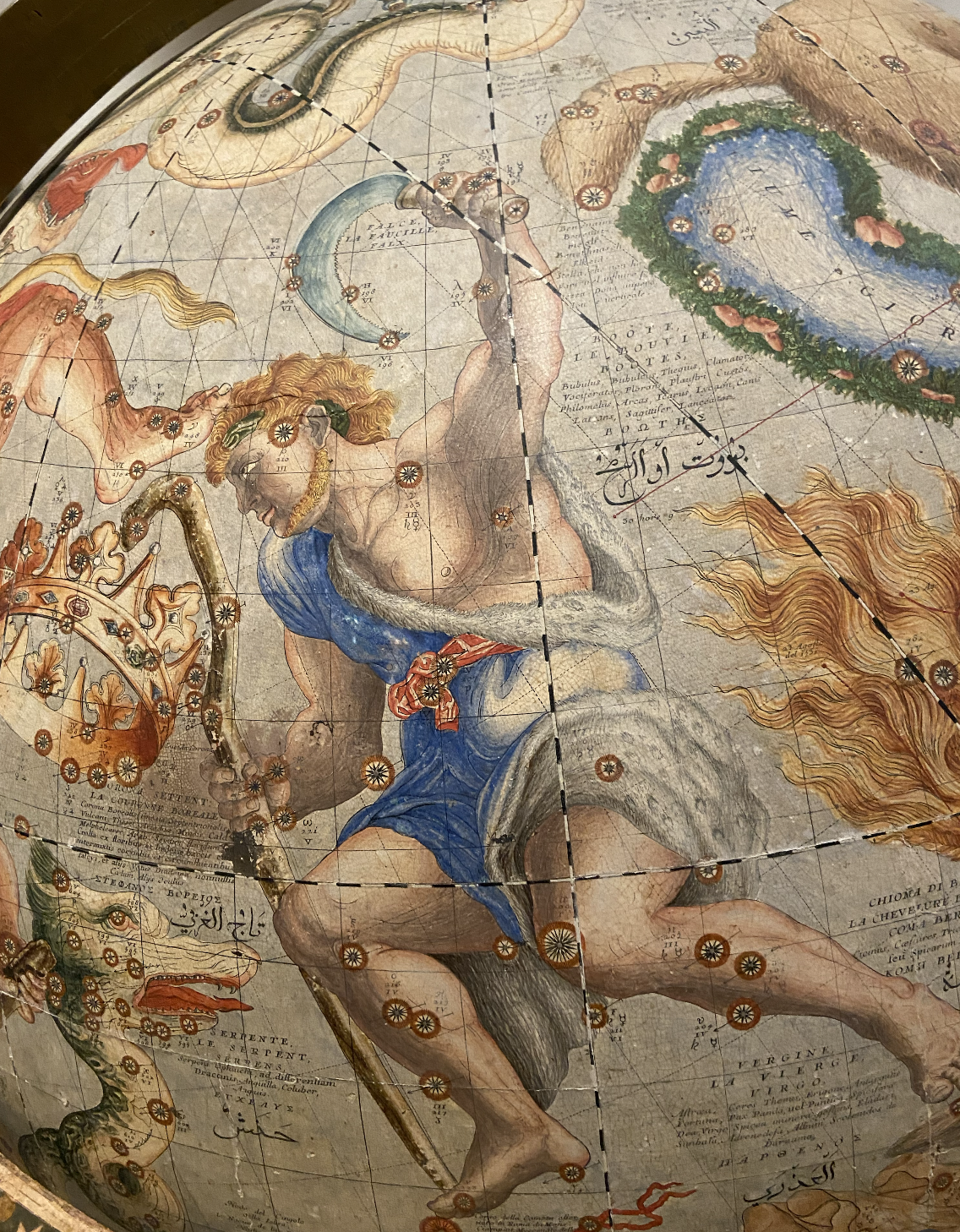
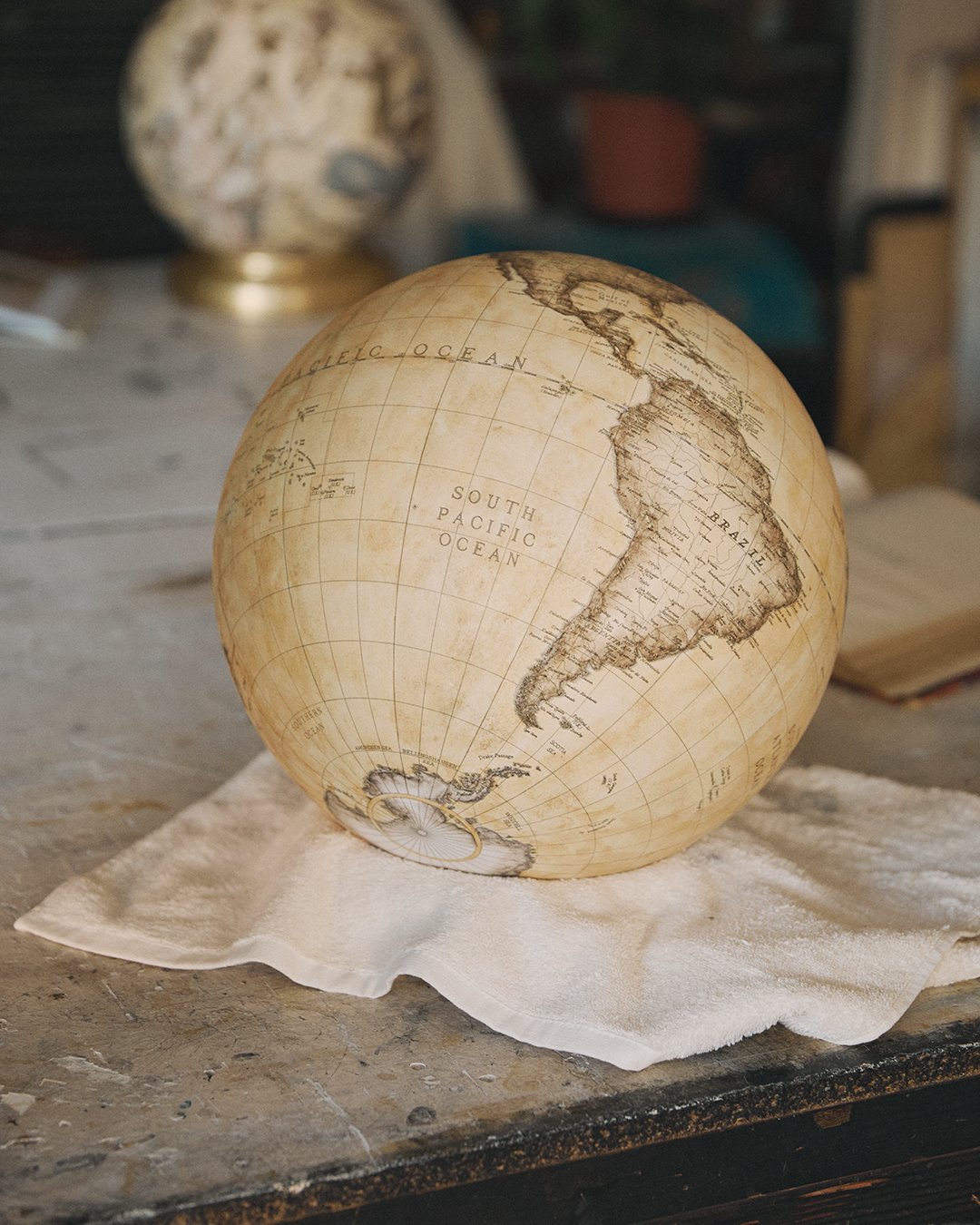
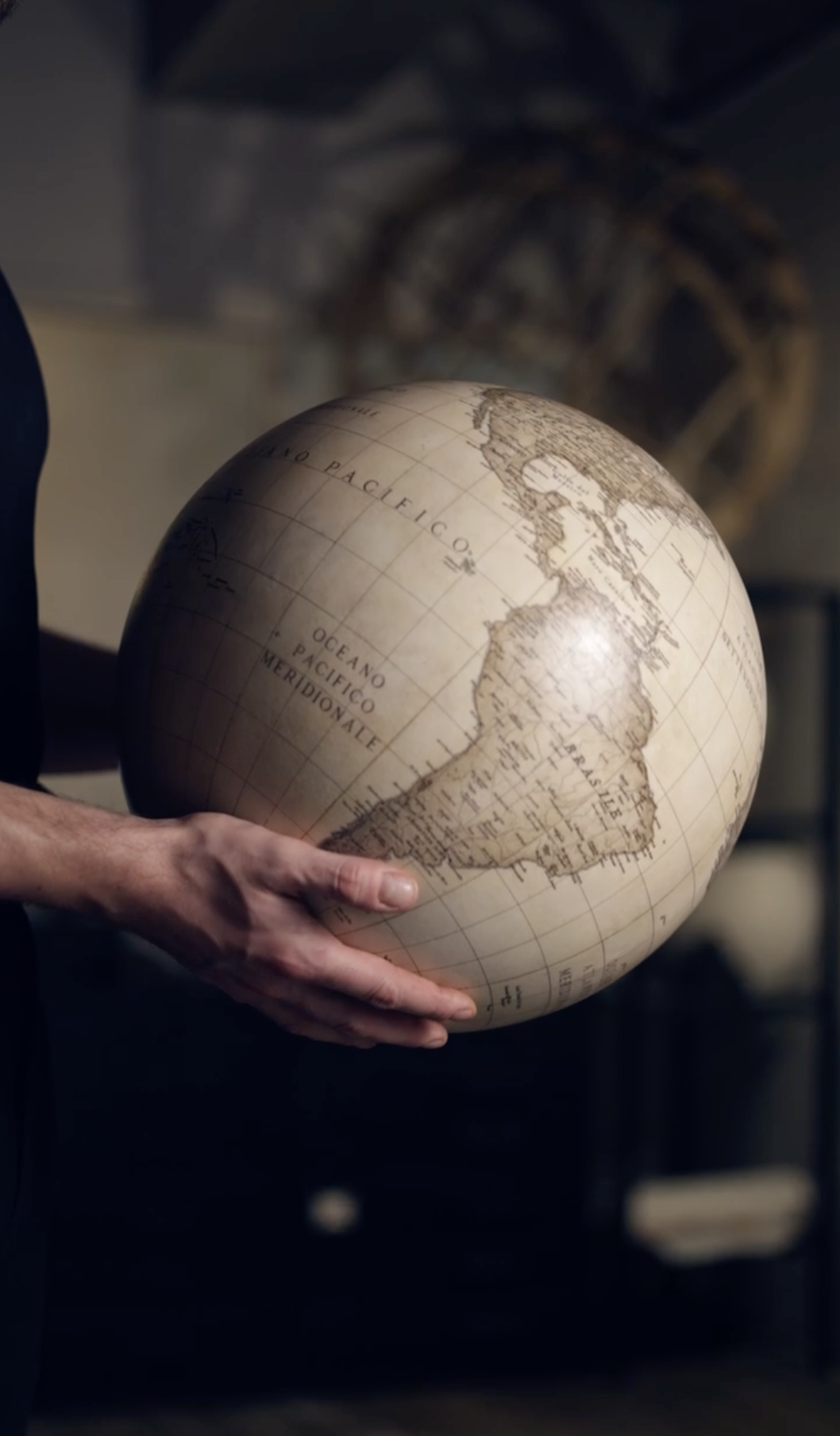

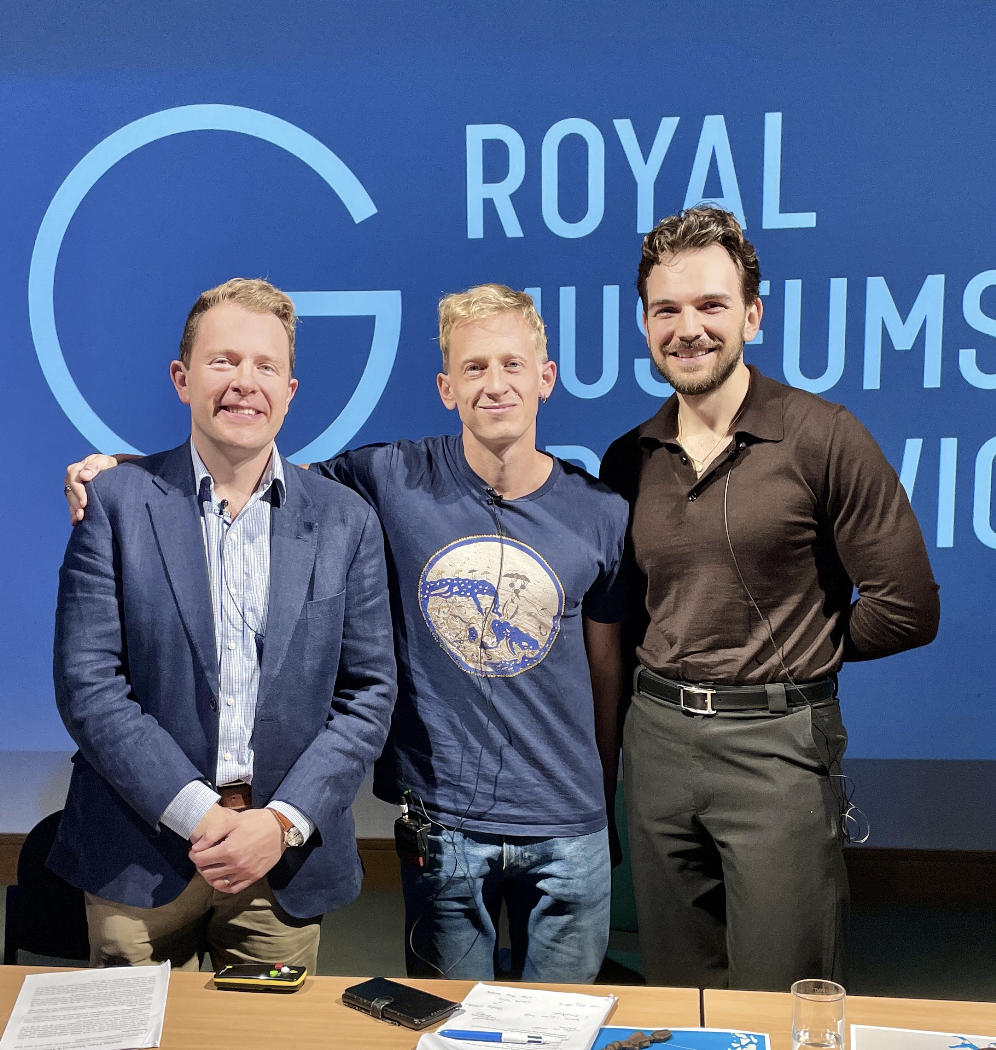
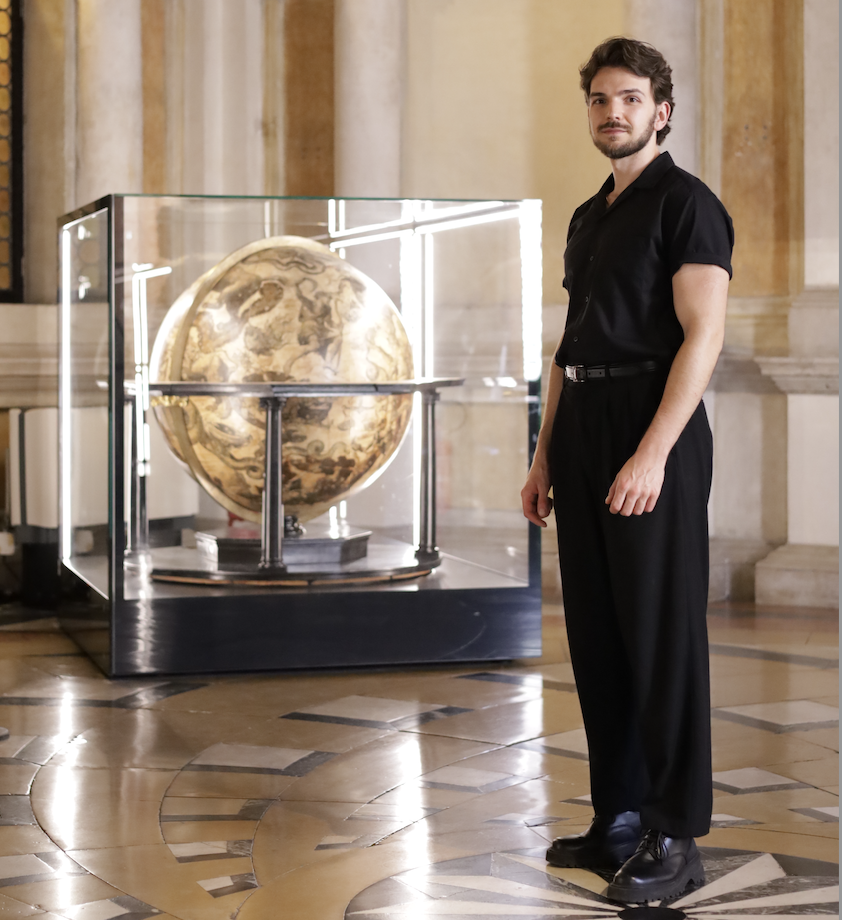


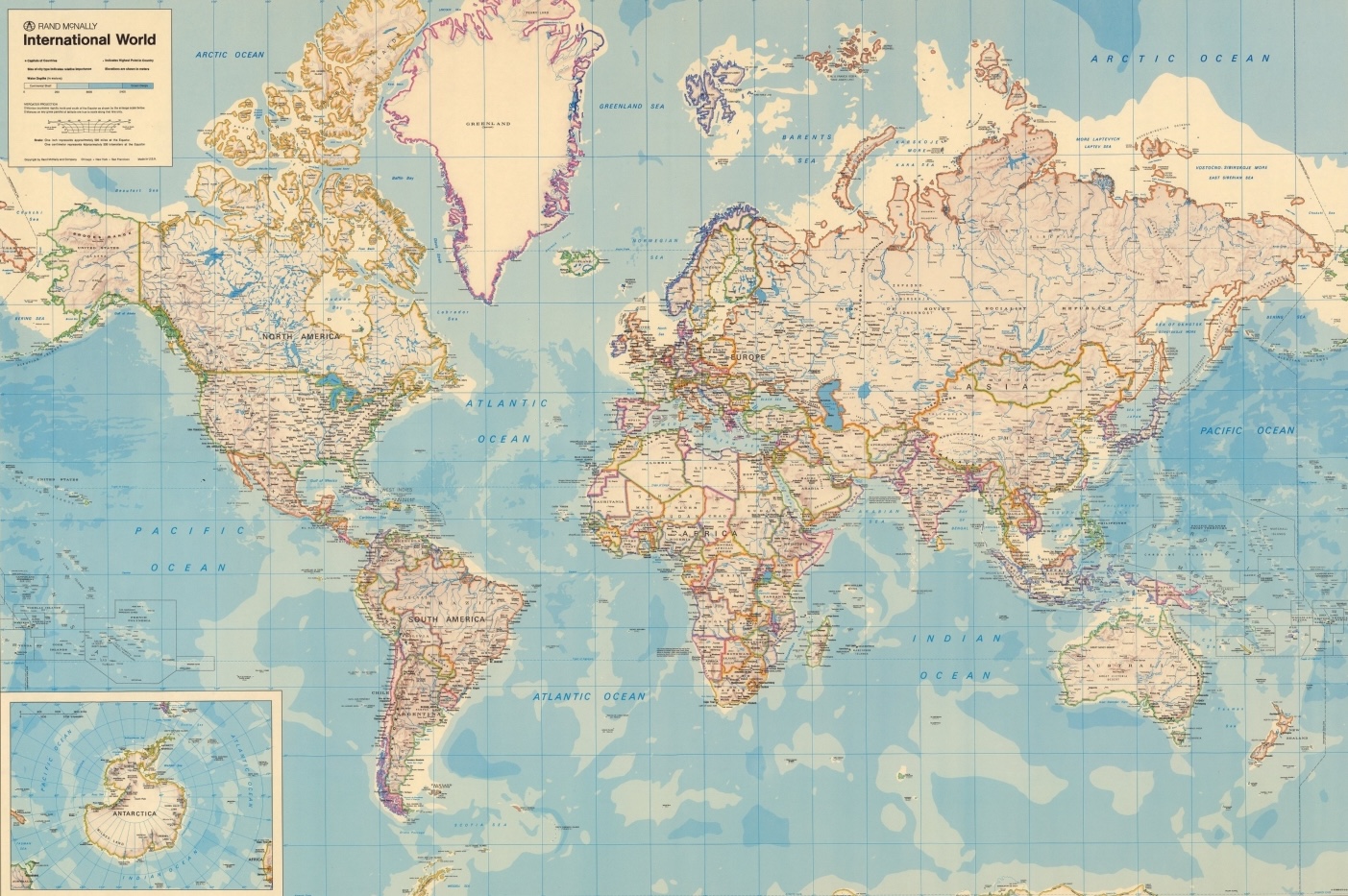
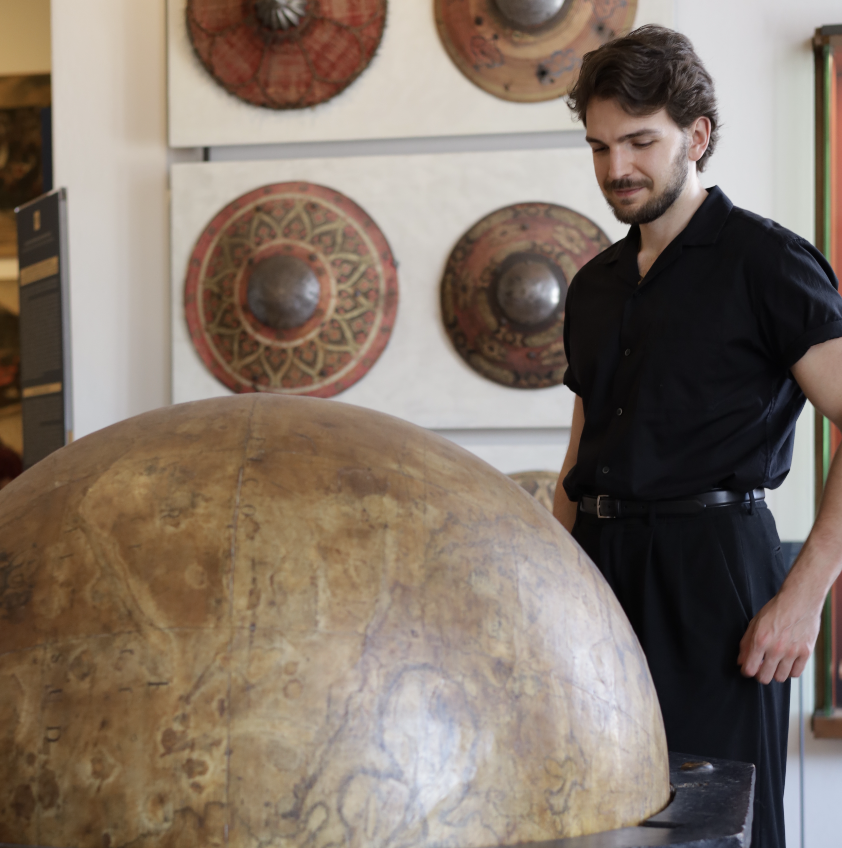
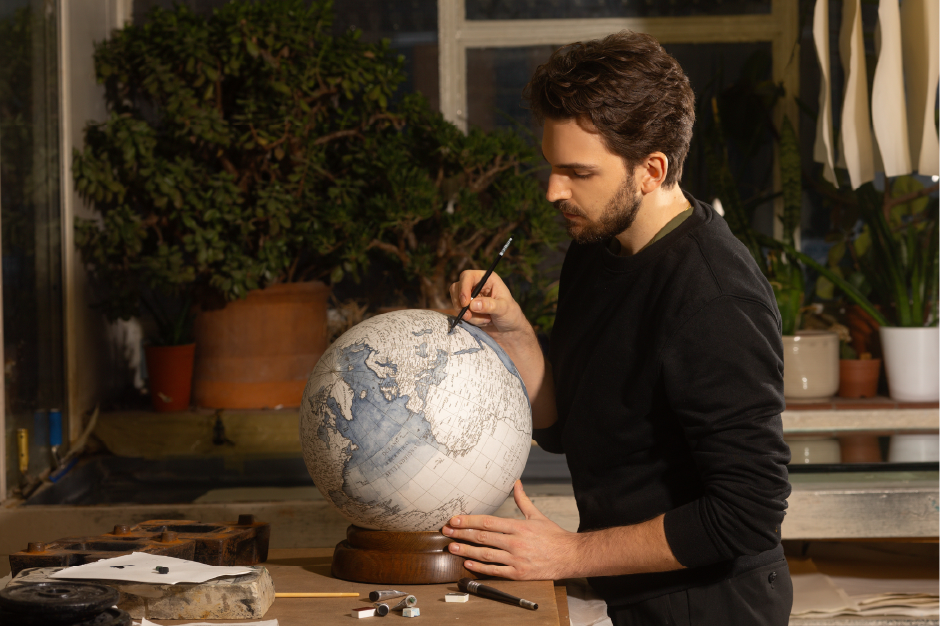
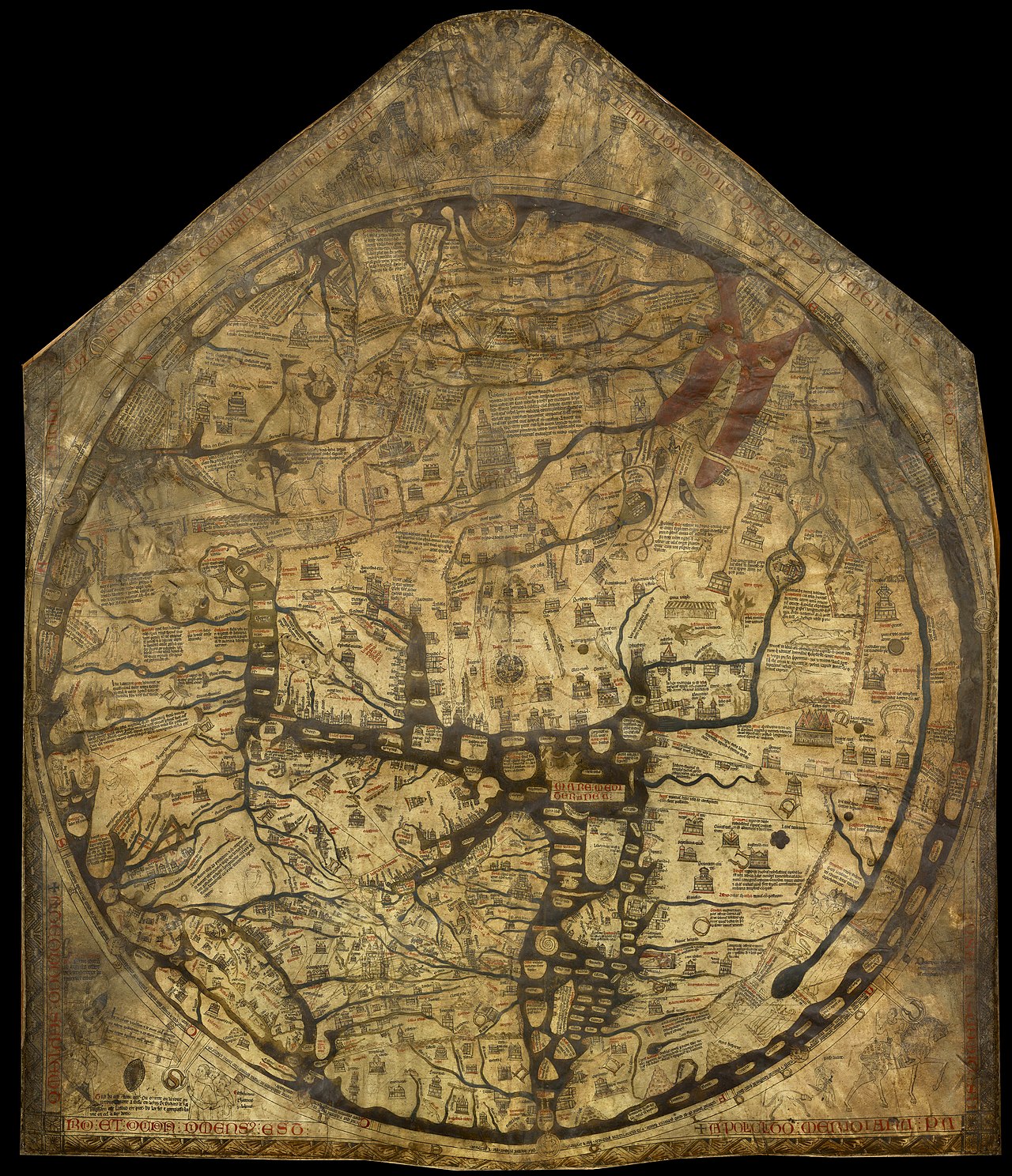
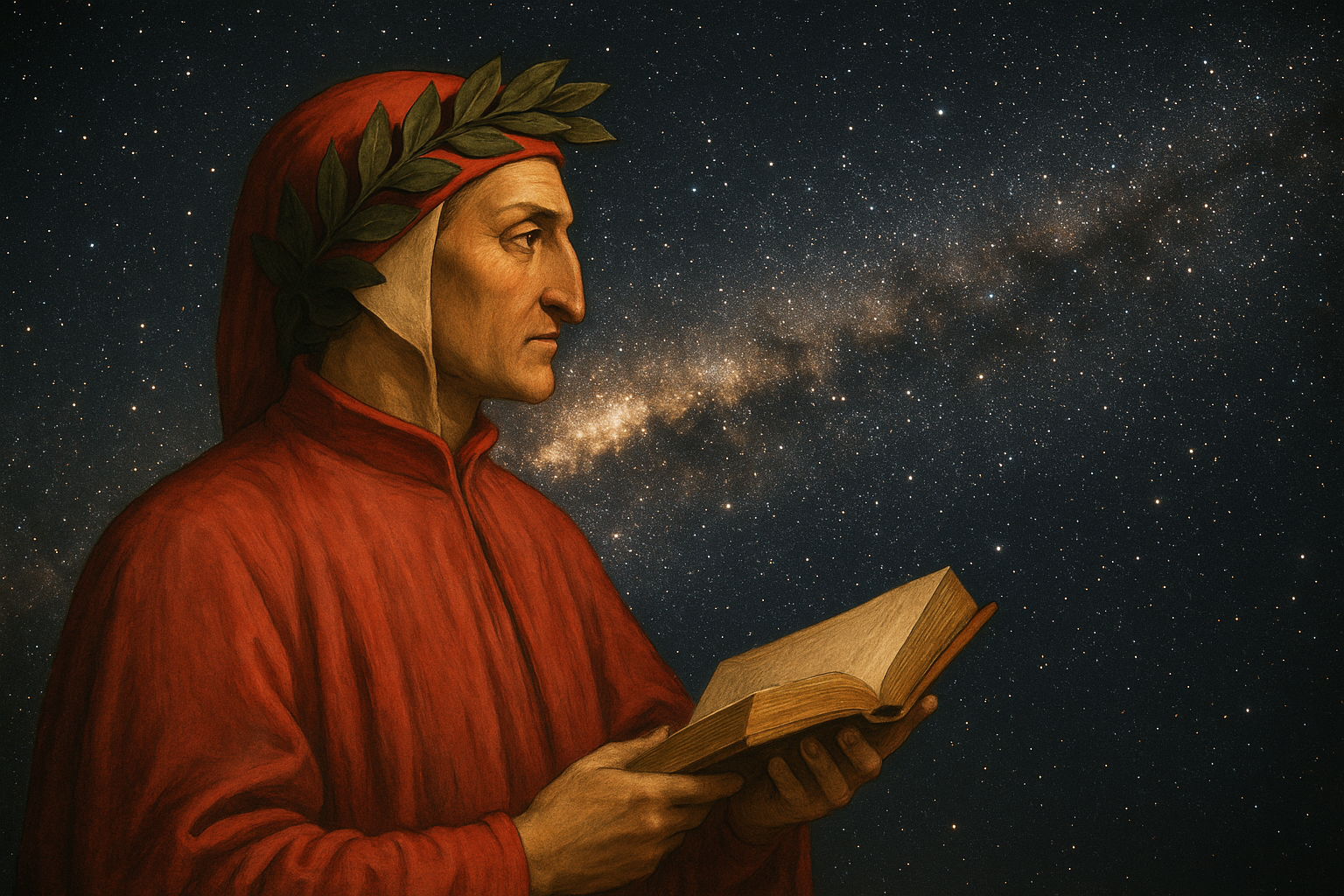
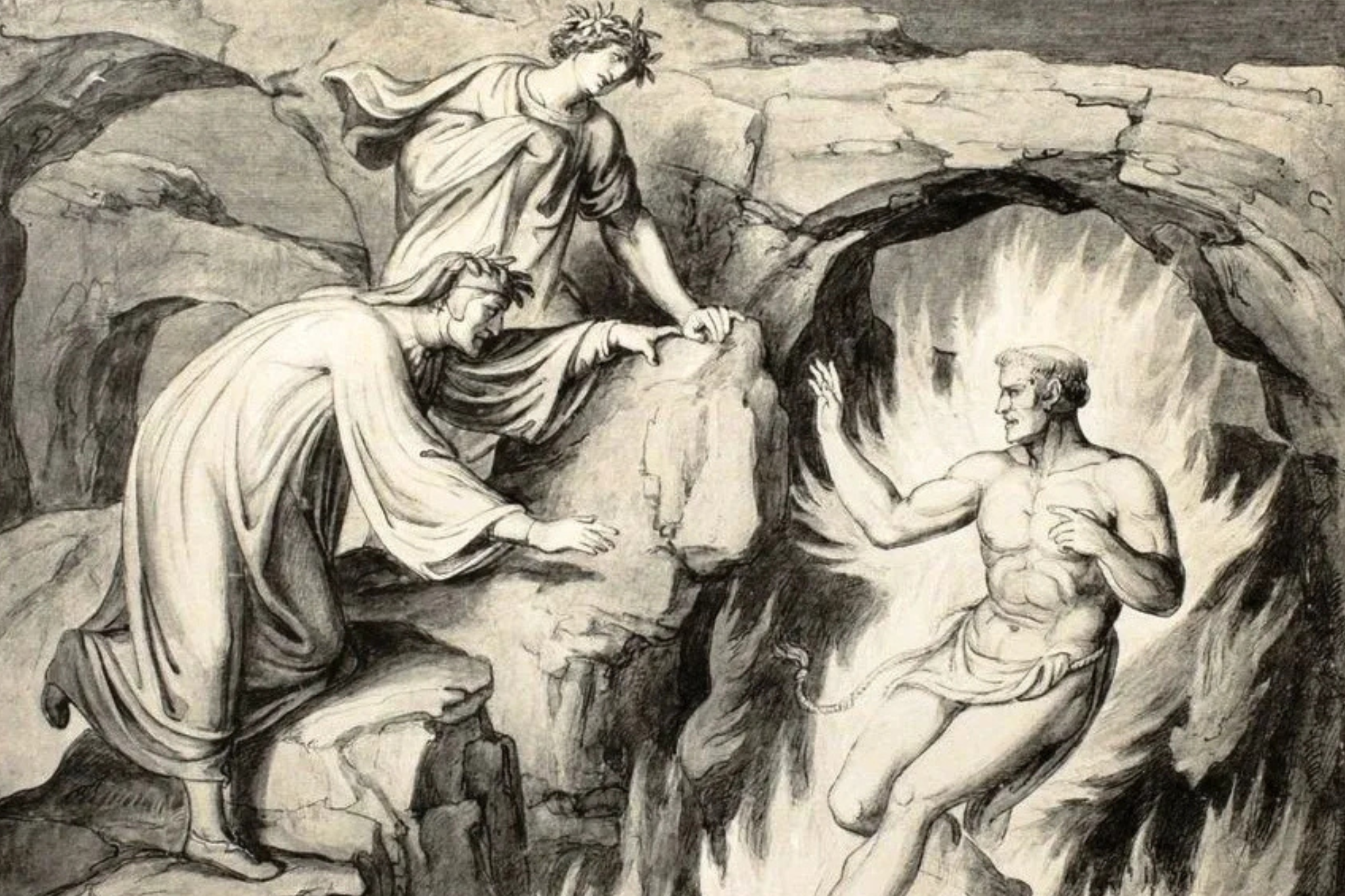







.avif)